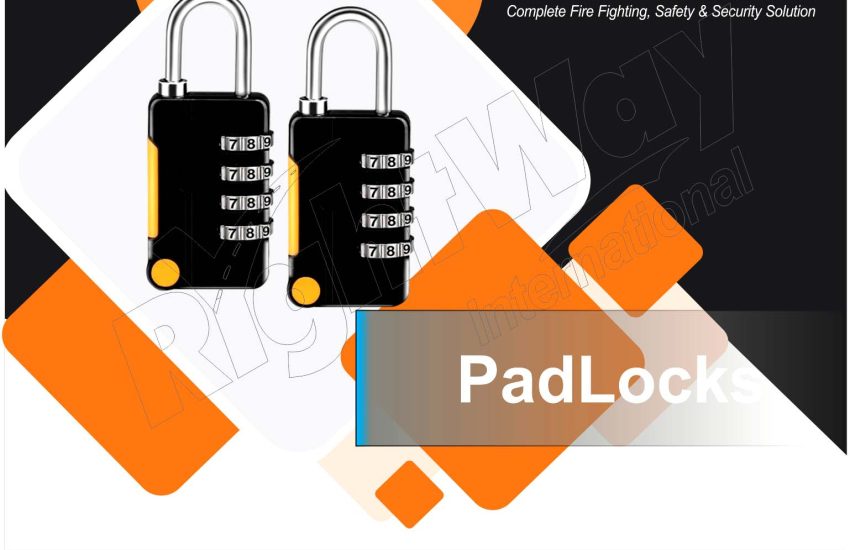Padlocks are versatile and widely used devices for securing various items and spaces. They come in different shapes, sizes, and mechanisms, each designed to provide a specific level of security. Whether you need to protect a gate, locker, or storage unit, understanding the different types of padlocks and their applications can help you choose the right one for your needs. This article explores the purpose, types, and benefits of padlocks, along with their diverse applications.
Purpose of Padlocks
- Security Protection: Padlocks are primarily used to secure gates, doors, lockers, and other valuables. They provide a physical barrier that prevents unauthorized access and helps protect personal and property assets.
- Access Control: By using padlocks, you can control who has access to specific areas or items. This is particularly important in settings where access needs to be restricted to authorized individuals only.
- Versatility: Padlocks can be used in various environments and for numerous purposes, making them a flexible choice for different security needs.
- Deterrent: The presence of a padlock acts as a deterrent to potential thieves and vandals, signaling that the area or item is secured and monitored.
Types of Padlocks
- Combination Padlocks: These padlock use a rotating dial or a series of buttons to open. They offer keyless convenience and are popular for personal lockers, gym lockers, and other general applications.
- Keyed Padlocks: Keyed padlocks operate with a key. They come in various designs, including single and double-locking mechanisms. Keyed padlocks are suitable for securing gates, sheds, and storage units.
- Re settable Combination Padlocks: These padlock allow users to set their own combination, providing a customizable and key less option. They are often used in shared environments where multiple users need access.
- Shackle less Padlocks: Designed without a protruding shackle, these padlock offer a higher level of resistance to cutting and prying. They are used in high-security applications where tampering is a concern.
- Heavy-Duty Padlocks: Made from robust materials like hardened steel or brass, heavy-duty padlock are designed to withstand physical attacks and harsh conditions. They are ideal for high-security needs, such as securing industrial equipment.
- Weatherproof Padlocks: These padlocks are built to resist environmental conditions, including moisture and extreme temperatures. They are used in outdoor applications where exposure to the elements is a concern.
Benefits of Padlocks
- Enhanced Security: Padlock provide a strong physical deterrent against unauthorized access. High-quality padlock with robust mechanisms offer excellent security for various applications.
- Ease of Use: Many padlock are designed for easy operation, whether they use keys, combinations, or resettable codes. This makes them user-friendly and practical for everyday use.
- Versatility: Padlock can be used in a wide range of applications, from securing personal items and vehicles to locking gates and storage units. Their adaptability makes them a valuable tool for many security needs.
- Durability: Padlock are built to be durable and long-lasting, with materials and designs that withstand physical stress, environmental conditions, and tampering attempts.
- Cost-Effectiveness: Compared to other security solutions, padlock are relatively inexpensive and offer a cost-effective way to secure various items and areas.
Applications of Padlocks
- Residential Security: Padlock are commonly used to secure gates, sheds, and storage units in residential settings. They provide an added layer of protection for personal property.
- Commercial Security: In commercial environments, padlock are used to secure gates, warehouses, and equipment. Heavy-duty and weatherproof padlock are often employed to meet the demands of business security.
- Industrial Use: Industrial facilities use padlock to secure machinery, tools, and access points. Heavy-duty and shackle less padlock are preferred for their durability and resistance to tampering.
- Public Facilities: Padlock are used in public spaces to secure lockers, bike racks, and other areas where temporary access control is needed.
- Travel and Transportation: For travel and transportation, padlock secure luggage, trailers, and vehicle doors, providing additional security during transit.
Conclusion
Padlock are essential tools for securing a wide range of items and areas, offering both flexibility and reliability in various security applications. By understanding the different types and benefits of padlock you can choose the most appropriate solution for your security needs. Whether for residential, commercial, industrial, or public use, padlock play a crucial role in protecting assets and ensuring peace of mind.


